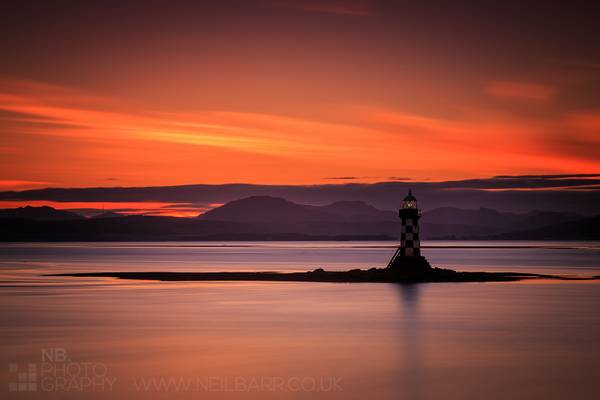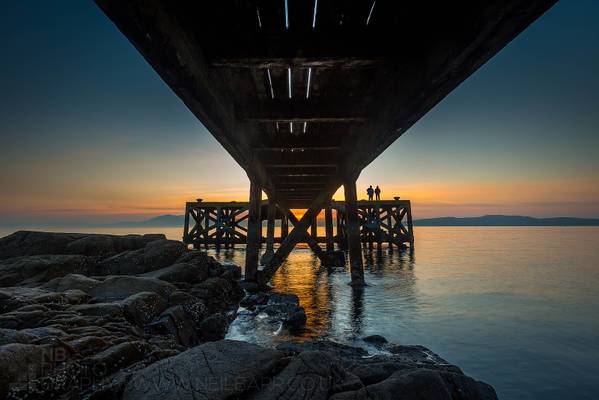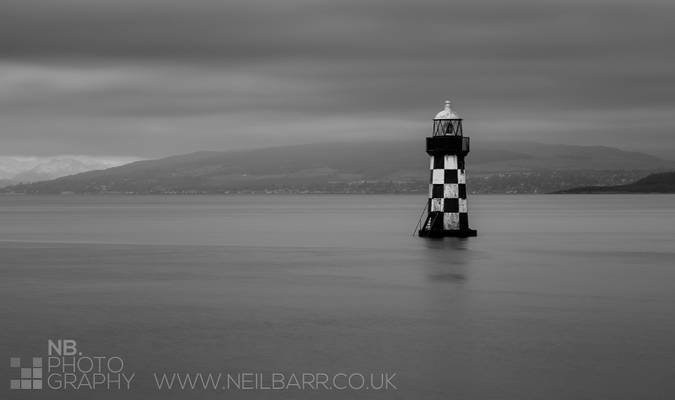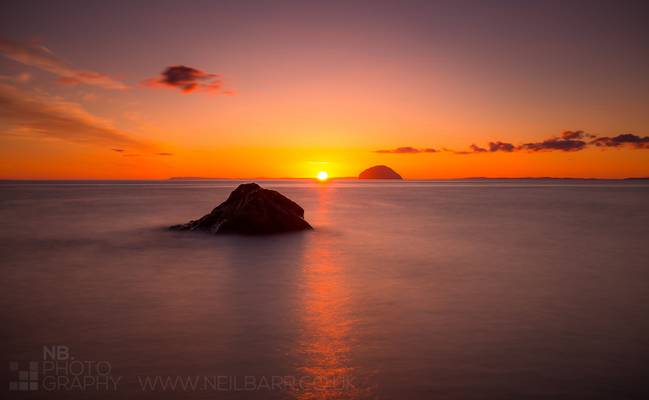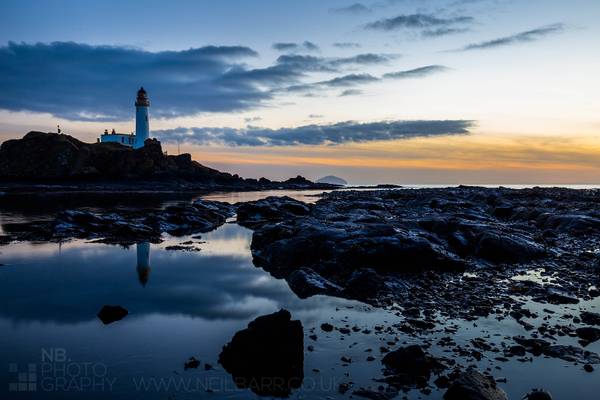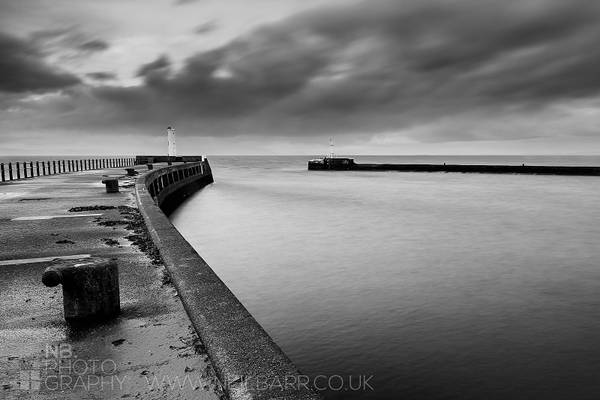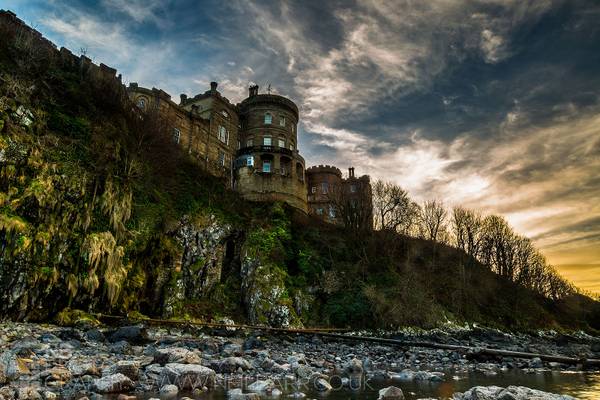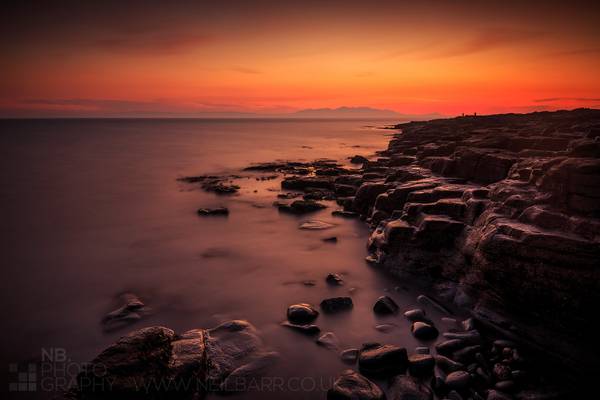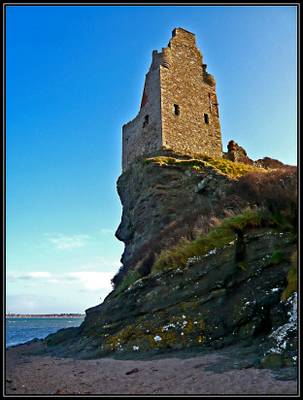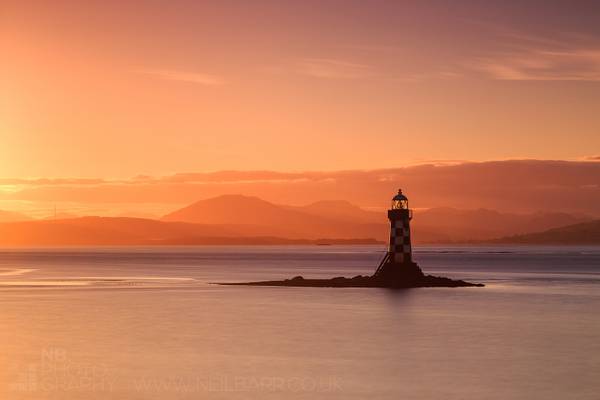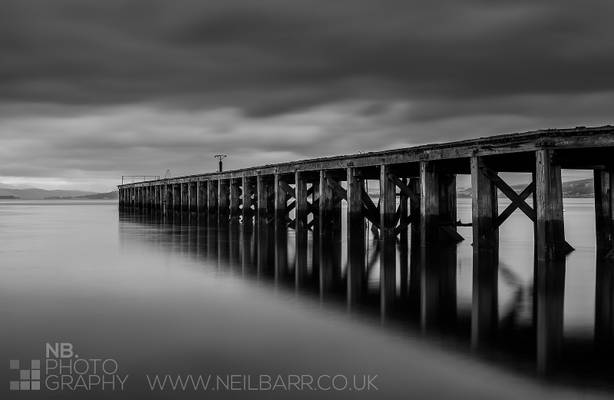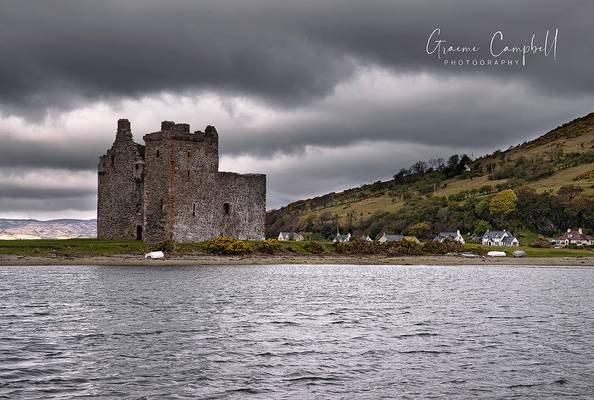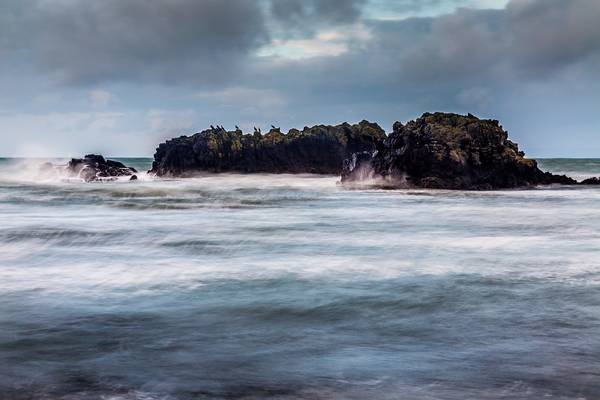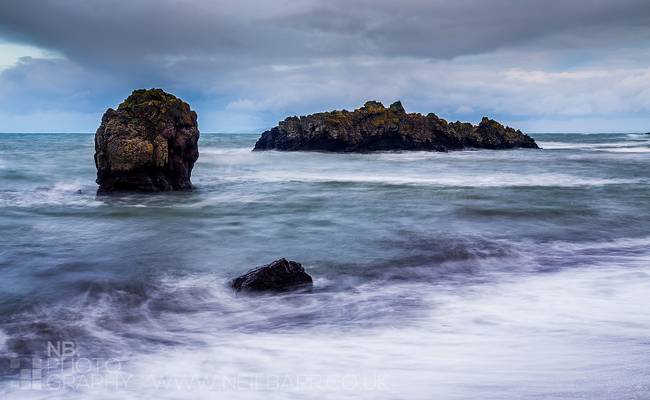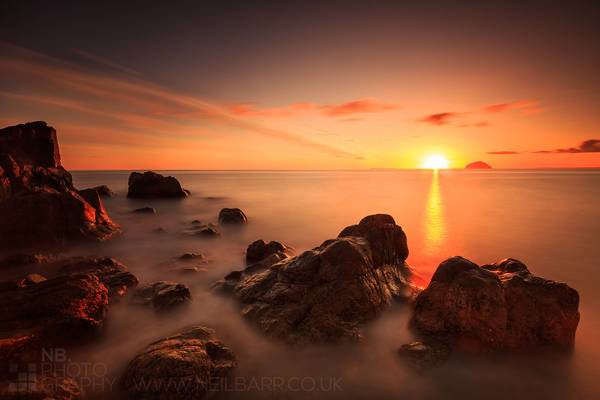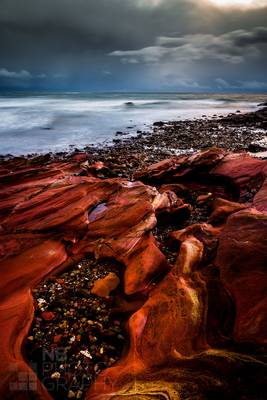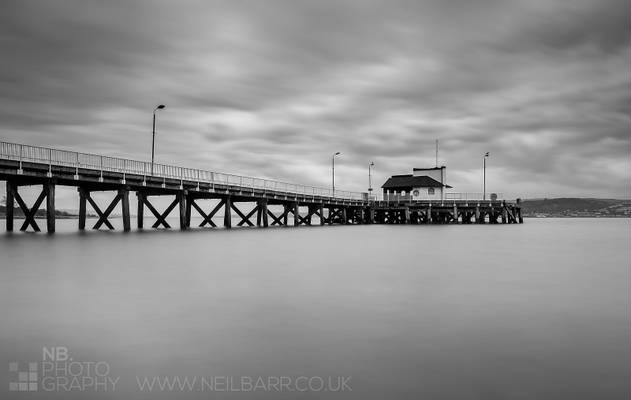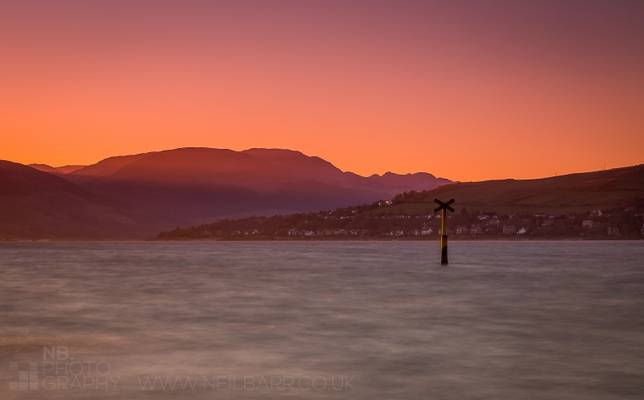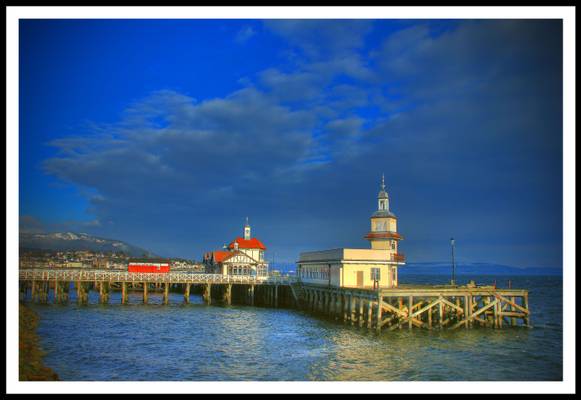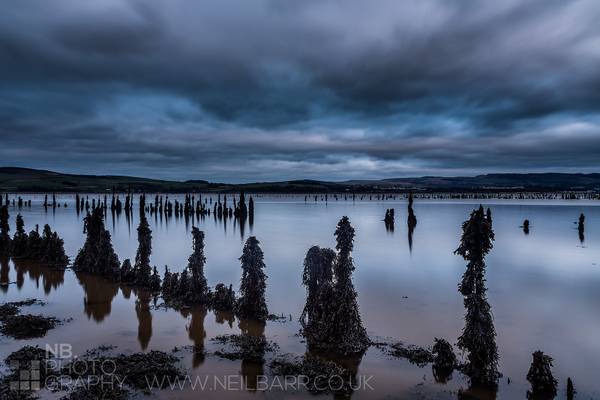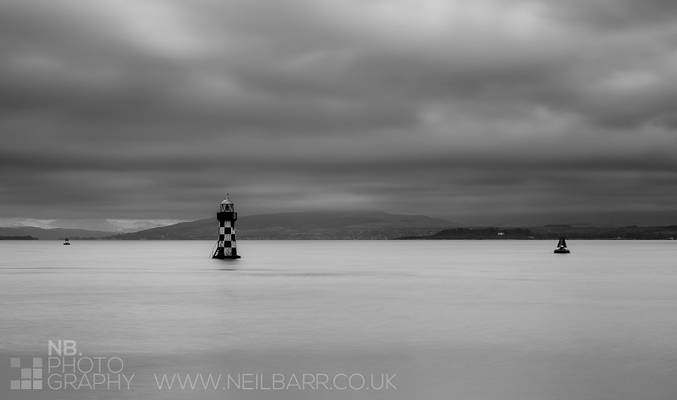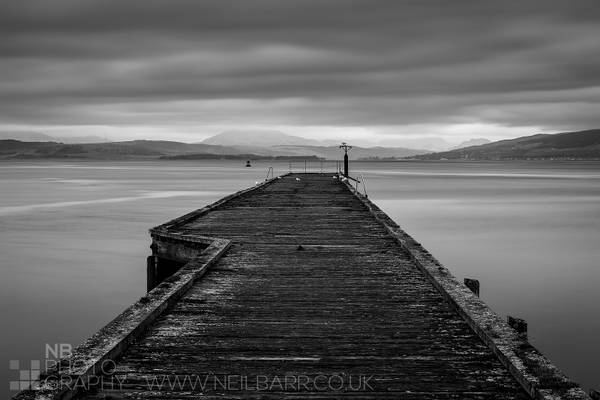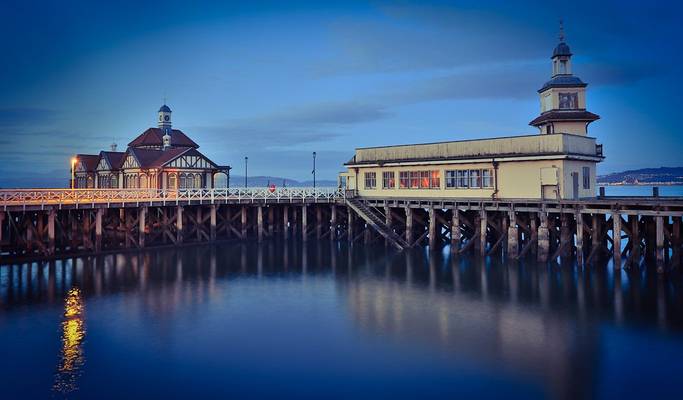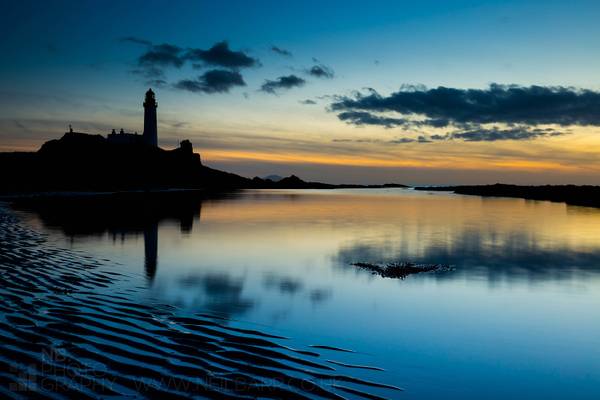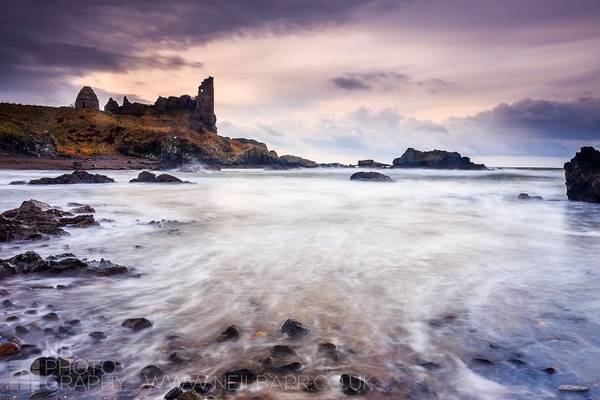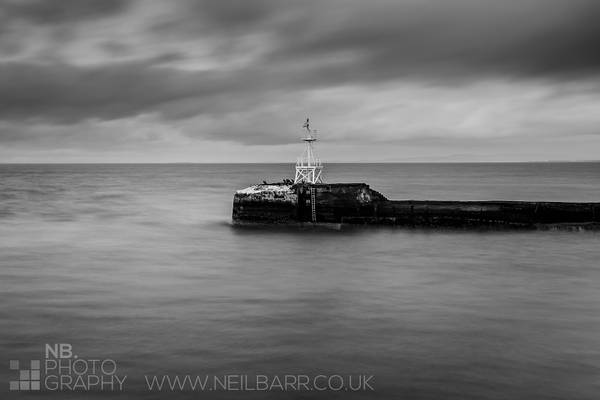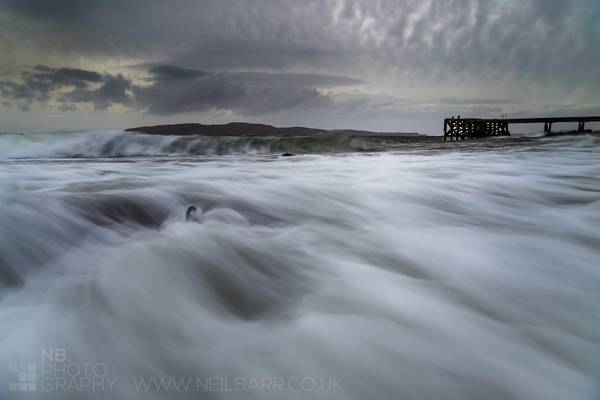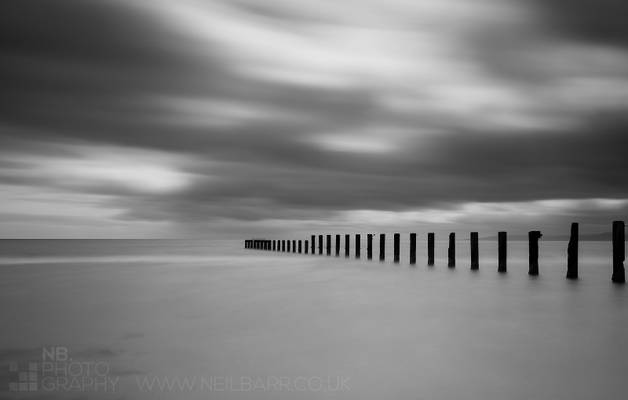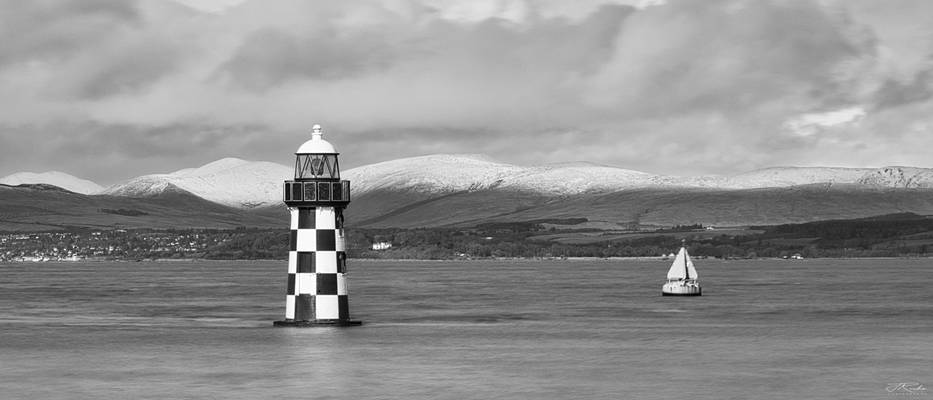
Firth of Clyde

by The Jacobite
The Perch Light is a Cylindrical Lantern structure with triangular glass panes atop, the light dates from around (1890) and is situated just offshore at West Quay, Port Glasgow Scotland. It sits atop a small outcrop of rocks and is a good warning light for shipping at night moving up and down the River Clyde.

by The Jacobite
Lochranza Castle dates from the 13th century when it was owned by the MacSweens. In 1262, King Alexander III granted the castle and its lands to Walter Stewart, the Earl of Menteith. It is believed that Robert the Bruce landed at Lochranza in 1306 on his return from Ireland to claim the Scottish throne. By 1371, the castle was the property of Robert II. It is thought that at this time it was used as a royal hunting lodge.During the 1490s, James IV used the castle in his campaign against the Lord of the Isles and the Clan MacDonald. In 1614 it was occupied by James VI and in the 1650s it was used by Cromwell.By 1705, Lochranza Castle was the property of the Hamilton family, after it was purchased by the Duchess of Hamilton. The Hamiltons had owned other estates on the Isle of Arran so eventually sold it to the Blackwood-Davidson family who used it as their principal seat. During the 18th century, the castle fell into disuse and was abandoned. The castle is now in the care of Historic Scotland.
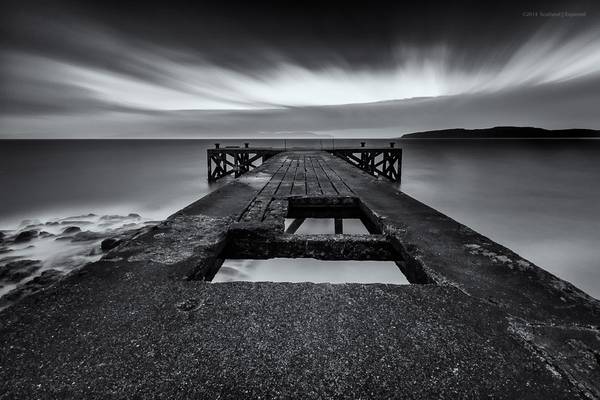
by Dee Eff
The old jetty at Portencross, another place that has been on my to do list, again let down by the weather forecast but defintely somwehere I'll revisit in the future.
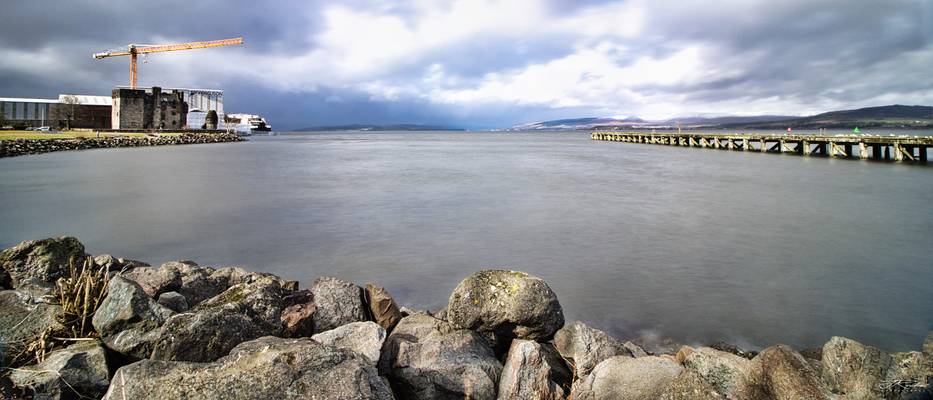
by The Jacobite
A panoramic view looking out over the River Clyde with some of the historical structures from past to present.
“Newark Castle” built around 1478 by George Maxwell when he inherited the Barony of Finlaystone, the castle is now the property of “Historic Scotland” and open to the general public.
Then behind the castle sporting the tall crane is “Ferguson’s Shipyard” founded in 1903, it is now the last remaining shipbuilder on the lower River Clyde. The MV Glen Sannox is currently under construction and due to go into service in 2022.
The wooden “Lamont’s Pier” stretching out into the river on the right is all that remains of what used to be James Lamont & Co, Ship Builders and Repairers. Truly at one time a lot was going on in this small coastal town of Port Glasgow on the River Clyde.
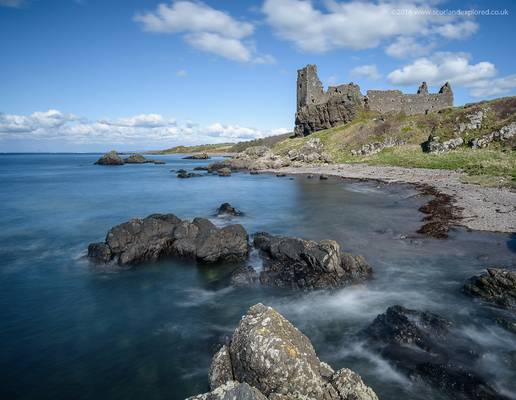
by Dee Eff
Went on a trip round Ayrshire yesterday with a couple of friends. Finally paid a visit to Dunure Castle as it had been a place I'd always wanted to visit.
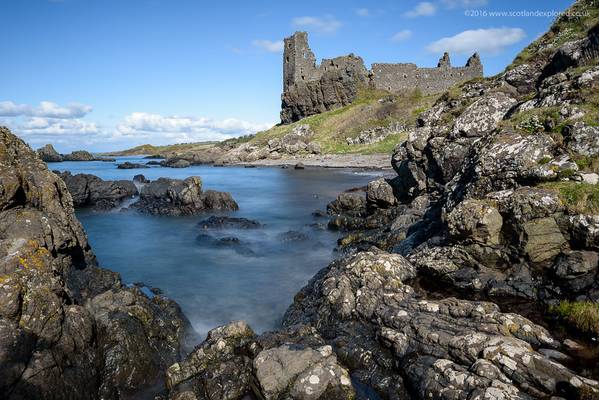
by Dee Eff
Dunure Castle teetering on the cliffs above the beach on a bright and breezy day in early spring!
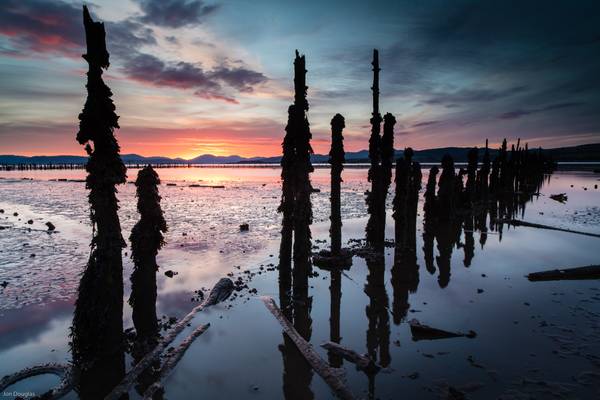
1st time out with the camera for ages and this is 2 minutes from the new house.
This area is called the timber ponds and it was constructed in the...

Kilchattan Bay on the Isle of Bute.
I loved this red rock and the lichen. Just wish I had my wide angle lens then.

by The Jacobite
An excursion into Long Exposure Photography on some local Timber Pond’s that were set up along the southern shore of the River Clyde in the early days of wooden shipbuilding, occupying a 3mile stretch of shoreline between Port Glasgow and Langbank. The industry required vast quantities of thoroughly seasoned timber, and with shipyards occupying most of the shore line from central Greenock to eastern Port Glasgow, demand was prodigious.The ponds prevented the timber from floating away and allowed the logs to be organised according to type, length of seasoning.
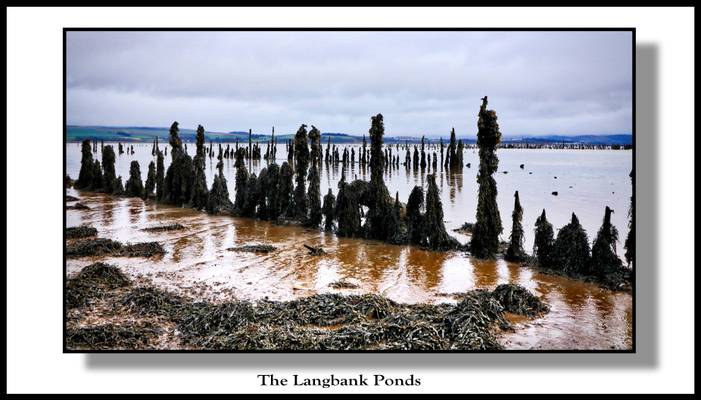
by The Jacobite
Timber Ponds were set up along the southern shore of the River Clyde in the early days of wooden shipbuiling, occupying the area between Port Glasgow and Langbank. The industry required vast quantities of thoroughly seasoned timber, and with shipyards occupying most of the shore line from central Greenock to eastern Port Glasgow, demand was prodigious.
The ponds prevented the timber from floating away and allowed the logs to be organised according to type, length of seasoning, and ownership. Extreme weather could result in the logs breaking free of the ponds, closing the river until they were recovered. Remnants of the timber ponds still exist in the lines of vertical wooden posts sticking out of the mud, and rectangular areas can still be seen in aerial views of the surrounding riverbed.
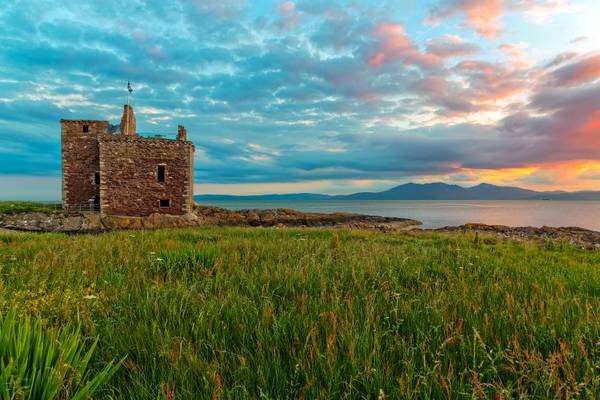
by Michael Kight
On our recent trip to the United Kingdom, I was actually on assignment to photograph castles, and anything else, associated with Clan Boyd. The day we arrived in Glasgow, Scotland, was a day of many “firsts” for me, one of them being driving a totally different way than we do in the states, on the left-hand side of the street from the right-hand side of the car. It helped that I had spent a few days with my friend Peter Williams (www.flickr.com/photos/diskdoc/) in Brighton, England, seeing how it’s done and finding out how the road system and signs equated with those here in the states. There wasn’t a world of difference, yet there was a difference. Somehow, my brain just clicked into it, and, as I much enjoy driving, the difference was enough that I felt much like I was at a ride in an amusement park... I loved it!
The first few nights there, we stayed at Airth Castle, which was built by Robert the Bruce, a contemporary of Robert Boyd. We checked in, situated room and luggage, and had plenty of time left for dinner, and an hour and a half drive to here, Portencross... if I could only get that English chick (the name I applied to the British female voice) on the GPS to understand my southern vernacular. It took us a good many minutes to program it: “Say the town.” “Portencross” “That word is disambiguous.” “Arrrrrgh!” “That word is disambiguous.”
What also made driving here such an experience wasn’t merely the situational issue of car and road... it was the fact that many of the roads here were ridiculously narrow. The drive out from Airth seemed much like driving in a funnel... the closer we got to the coast, the closer the roadside got. Every time someone passed by on the other side of the road, I heard Joyce say, “You came awfully close over here!” Well, they came awfully close over on my side too... but that was part of the fun! We saw more than a few cars with the side-mirror dangling apparently from such an encounter. Obviously, jousting is still somewhat still in vogue in the UK.
Having survived the drive to Portencross, we grabbed camera and gear, and hoofed it to the castle. You may be thinking the same thing I did... big, blocky structure in the middle of nowhere... quite underwhelming... until you realize the significance of this place. The lands around Portencross were given to the Boyds of Kilmarnock by King Robert I for their help at the Battle of Bannockburn... this is the seat of the House of Boyd. An exact history of this place will likely never be known, yet from its beginning around 1360, there have been indicators that Portencross Castle may have been a royal residence, as it is known that several charters of the first two Stuart kings were signed there.
Legend has it that the castle may have been the last mainland resting place for past Scottish kings. For over two hundred years, the bodies of former kings were taken by road to Portencross where they were ferried to Iona where they would be buried. If it is legend, it’s an astounding one.
There’s something sacred about that... I had that on my mind as I worked to find a “just right” composition of this “blocky” form. There’s history here. I’m overlooking the Firth of Clyde from the shores of County Ayrshire in Scotland, much the same way that my wife’s ancestors did nearly 700 years ago... and I thanked God for them... and for her. Without them, there would be no "her"... and she brings something that was missing into my life. History unfolds here, and in it I see some of who she is.
We had a lot to talk about on the drive back to Airth. The "English chick" was left out of the conversation, however.

by The Jacobite
Portencross Castle is situated on a rocky outcrop in north Ayrshire Scotland overlooking the Firth of Clyde, it dates back to the 14th century and legend has it that it was the last resting place of the great kings of Scotland. where they lay in state before being transported to the west coast Isle of Iona for burial.
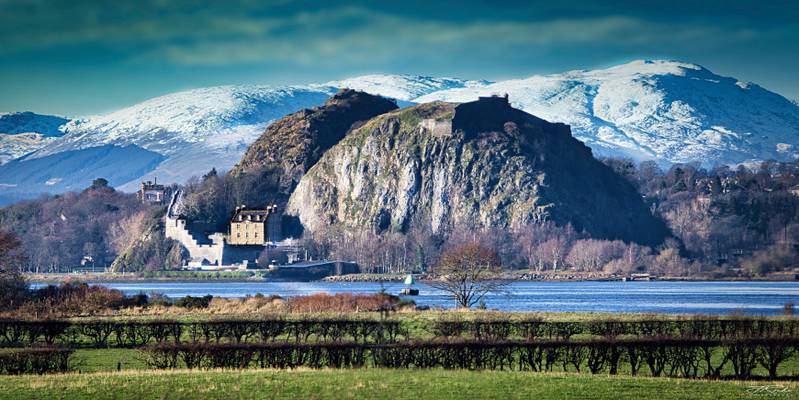
by The Jacobite
A view across the River Clyde to the guardian of the river, the majestic "Dumbarton Rock" with the snow clad peaks of the "Lomond Mountains" in the background.
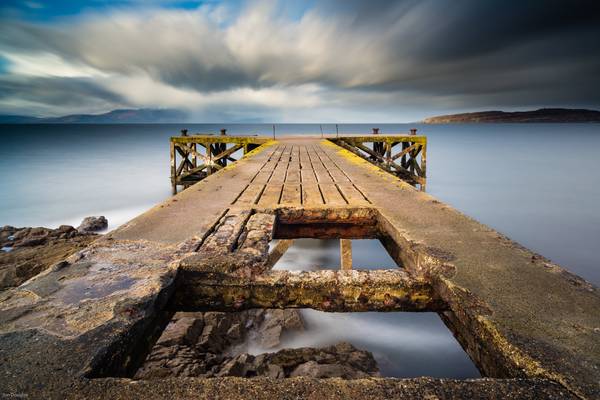
166 Seconds of movement from Portencross Pier on a lovely Saturday Morning.
Portencross is usually photographed at sunset but I woke up early and...
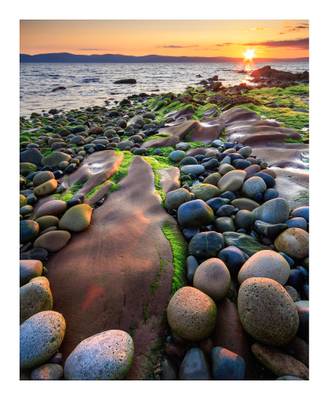
Following a wonderful day in the hills I drove to Machrie Bay for the sunset. Unfortunately I ended up to the North of the main bay but still found...
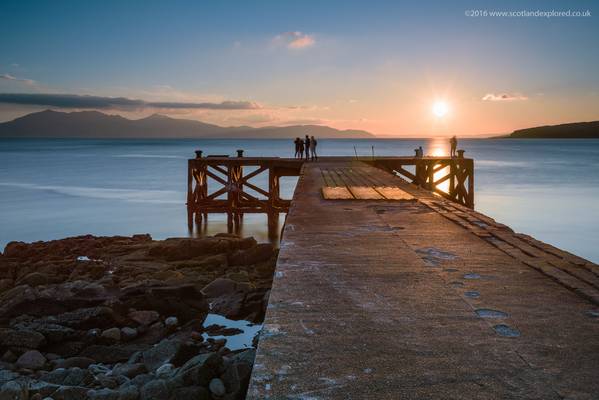
by Dee Eff
A gathering of folks at the end of Portencross Pier to catch the sunset.
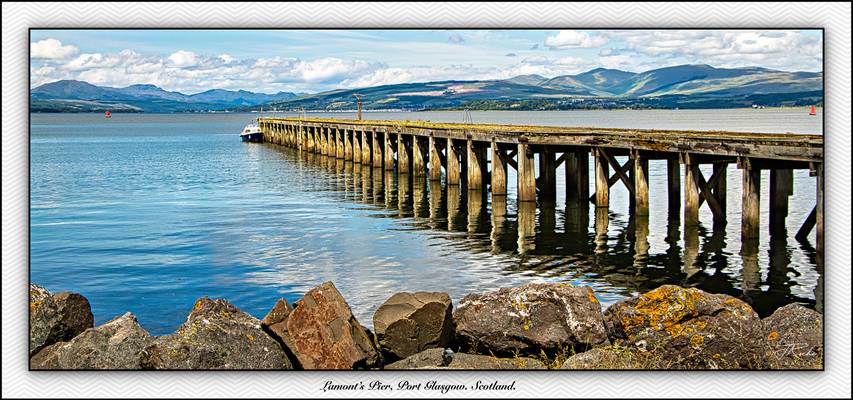
by The Jacobite
This wooden pier is all that is left of Lamont Shipbuilders of Port Glasgow, Scotland. James Lamont & Co Shipbuilders and Repairers in Greenock was founded in 1870 and operated from Dock Breast Greenock. The company bought the Castle Works near to Newark Castle Port Glasgow and started building ships there from around 1946 but closed in 1980. At one time there were parallel piers but only this one survives today. A campaign was launched a few years ago to preserve the pier as it starts the Clyde Coastal Walkway from Newark Castle C/park.
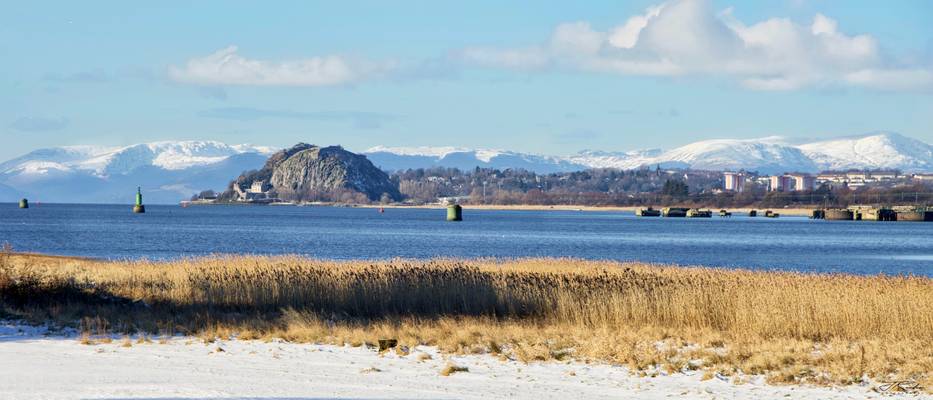
by The Jacobite
I suppose there are a lot of people like me at this moment in time (Lockdown) finding it difficult to get a new take on our daily outings due to travel restrictions, so on a recent walk on a rather chilly day I took this photo looking down the River Clyde towards Dumbarton Rock from my local shoreline here in Erskine, Scotland. I'm waiting on the day when I can legally drive to the far away mountains and enjoy a closer view of them in their snow clad condition, but I have a feeling that the snow will have gone by then.....Oh my!!!......
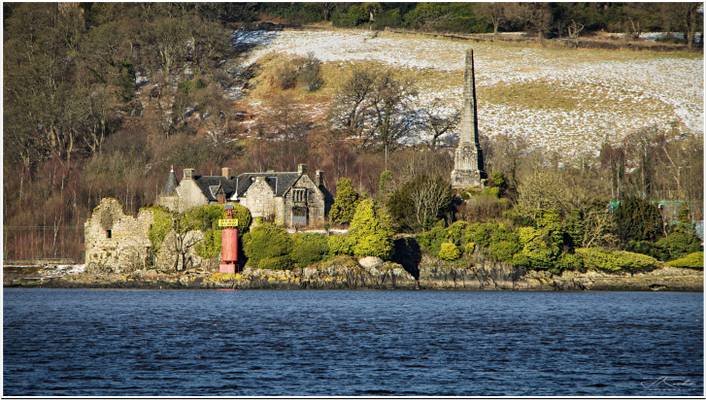
by The Jacobite
Dunglass Castle is thought to have been built some time in the 14th century, although it’s early history isn’t known. However in 1439 it was granted to Sir John Colquhoun who was beaten in a skirmish with the MacFarlanes of Arrochar in 1592 and fled to Bannachra Castle where he was killed by an archer who fired an arrow through a window. From 1893 until 1899 the designer Talwin Morris owned and lived at Dunglass Castle, and carried out some work on the interiors. In 1899 he sold the property to his best friend Charles Macdonald, the lawyer brother of the artist Margaret Macdonald who would later marry Charles Rennie Mackintosh who designed the interiors, in particular the drawing room and dining room.
The obelisk erected in 1838 is a Monument to Henry Bell who designed the paddle-steamer Comet. Launched at Port Glasgow in 1812, it provided the first regular steamship service on the River Clyde and paved the way for the Clyde’s place as a centre of shipbuilding and marine engineering.

by Dee Eff
Got this whilst dodging rain showers.
Thanks to all Phoide contributors to Firth of Clyde!
Most notably The Jacobite, Dee Eff and Michael Kight.
